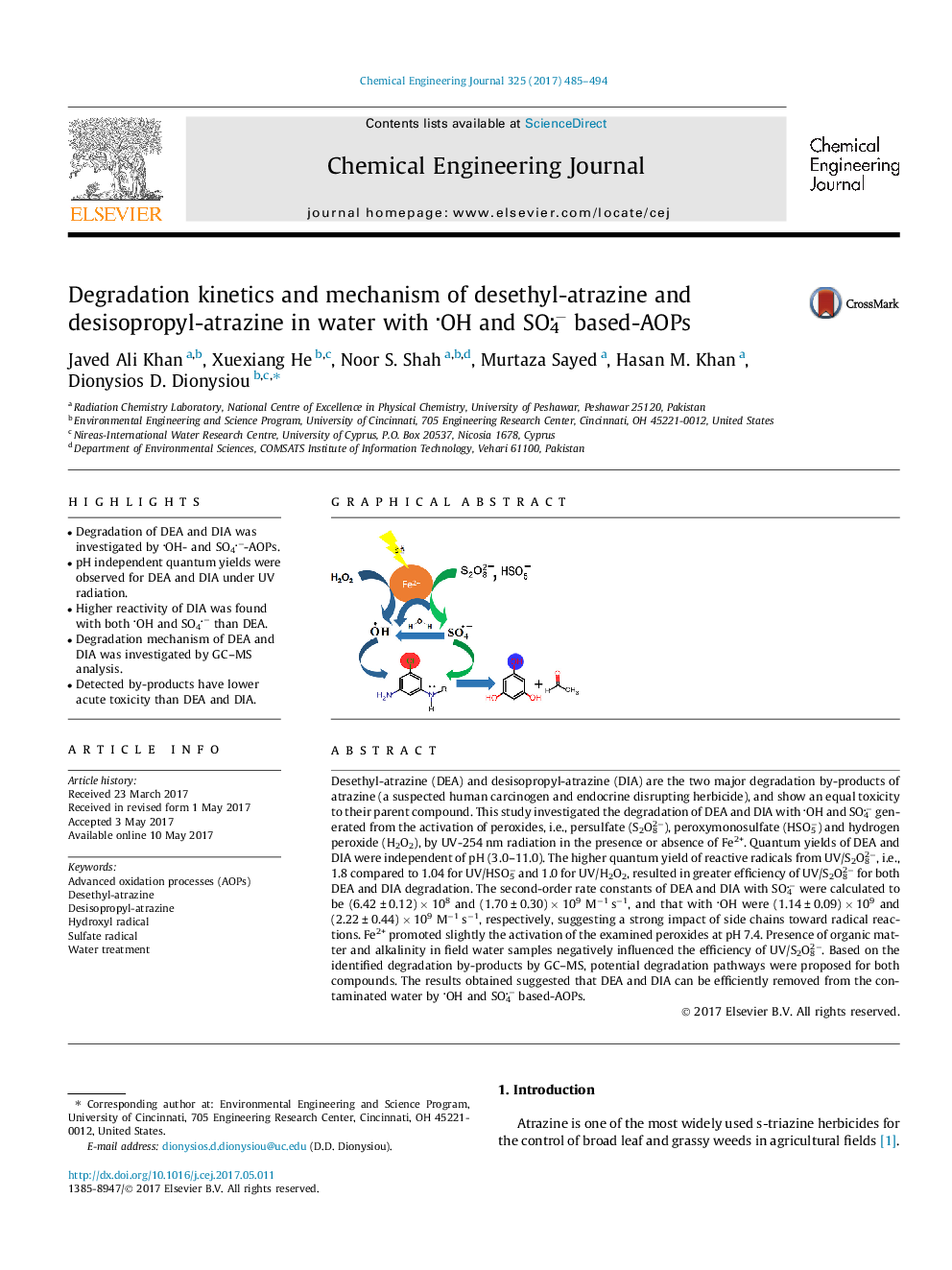| Article ID | Journal | Published Year | Pages | File Type |
|---|---|---|---|---|
| 6466138 | Chemical Engineering Journal | 2017 | 10 Pages |
â¢Degradation of DEA and DIA was investigated by OH- and SO4â-AOPs.â¢pH independent quantum yields were observed for DEA and DIA under UV radiation.â¢Higher reactivity of DIA was found with both OH and SO4â than DEA.â¢Degradation mechanism of DEA and DIA was investigated by GC-MS analysis.â¢Detected by-products have lower acute toxicity than DEA and DIA.
Desethyl-atrazine (DEA) and desisopropyl-atrazine (DIA) are the two major degradation by-products of atrazine (a suspected human carcinogen and endocrine disrupting herbicide), and show an equal toxicity to their parent compound. This study investigated the degradation of DEA and DIA with OH and SO4â generated from the activation of peroxides, i.e., persulfate (S2O82â), peroxymonosulfate (HSO5â) and hydrogen peroxide (H2O2), by UV-254 nm radiation in the presence or absence of Fe2+. Quantum yields of DEA and DIA were independent of pH (3.0-11.0). The higher quantum yield of reactive radicals from UV/S2O82â, i.e., 1.8 compared to 1.04 for UV/HSO5â and 1.0 for UV/H2O2, resulted in greater efficiency of UV/S2O82â for both DEA and DIA degradation. The second-order rate constants of DEA and DIA with SO4â were calculated to be (6.42 ± 0.12) Ã 108 and (1.70 ± 0.30) Ã 109 Mâ1 sâ1, and that with OH were (1.14 ± 0.09) Ã 109 and (2.22 ± 0.44) Ã 109 Mâ1 sâ1, respectively, suggesting a strong impact of side chains toward radical reactions. Fe2+ promoted slightly the activation of the examined peroxides at pH 7.4. Presence of organic matter and alkalinity in field water samples negatively influenced the efficiency of UV/S2O82â. Based on the identified degradation by-products by GC-MS, potential degradation pathways were proposed for both compounds. The results obtained suggested that DEA and DIA can be efficiently removed from the contaminated water by OH and SO4â based-AOPs.
Graphical abstractDownload high-res image (51KB)Download full-size image
